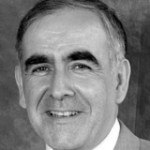 Does life really imitate art, or is it the other way round? Listening to an exhilarating live performance by the Philadelphia Orchestra of Till Eulenspiegel’s Merry Pranks, the droll tone poem about a famous trickster by Richard Strauss, I was struck by the notion that this might be the first description of ADHD through music.
Does life really imitate art, or is it the other way round? Listening to an exhilarating live performance by the Philadelphia Orchestra of Till Eulenspiegel’s Merry Pranks, the droll tone poem about a famous trickster by Richard Strauss, I was struck by the notion that this might be the first description of ADHD through music.
The musical hilarity is marked by impulsivity, sudden shifts of gear, and a failure to read signals of social approbation. On reflection I wondered whether I was being prompted by the theme of my study visit to Philadelphia to link up with the Injury Prevention Programme of the Children’s Hospital of Philadelphia.
In addition to my calling as a geriatrician, I have become ever more involved with traffic medicine over the last twenty years, and now direct the Traffic Medicine Programme for the Irish government. Our work includes developing guidelines on medical fitness to drive, educational programmes, and research.
A fascinating window into health and driver behaviour arises from ADHD, with many aspects illuminating for other age groups: hence my fruitful visit to the remarkably productive research team in Philadelphia. No wonder I began to rethink the Strauss tone poem.
A different aesthetic experience in the city, a visit to the extraordinary jumble of Cézanne, Matisse, Renoir and early American iron-work in the Barnes Foundation, prepared me for the diversity of the conference in Washington to which I subsequently journeyed.
The Transportation Research Board, a branch of the US National Research Council, hosts a dizzyingly complex annual conference, ranging from engineers enthusing over asphalt to exciting developments in driverless cars.
Nested among the 10,000 engineers are several hundred people focusing on human factors, and in particular driving ability. Even within this grouping there are many voices clamouring to be heard, from advocacy through academia, professional groupings, and those who have various forms of technology to sell.
Indeed, the assumption that everyone has something to sell—whether in the social or financial economy—seems to be such that not a single presentation that I witnessed included a conflict of interest statement, even when conflicts were clearly present to those in the know.
Emerging news from the conference included demonstration of a further fall in the number of deaths among older drivers, already one of the safest demographic groups. As fragility is the key element in older driver deaths, discussion centred on whether this trend represented more robust patterns of physical ageing, better in-car safety measures, or changes in driving habits and milieu. Input from Ann Dellinger of the Centers of Disease Control and Prevention added a helpful element of public health science to the debate.
The meeting also heard from our own international research group into the first comparison of scientific rigour of guidelines on medical fitness to drive from Anglophone countries. While the study indicated room for improvement, it also highlighted how these are not strictly clinical guidelines, and are informed by a range of social and attitudinal elements such as practice and habit.
The commercial element sometimes intruded in ways challenging to the tenor of a scientific meeting, as in a presentation from the American Automobile Association on a training programme for older drivers that was more sales pitch than academic inquiry.
Not only are older drivers a safe group, but there is no evidence of efficacy for retraining of older drivers: indeed, an unpublished report from Florida suggested more minor crashes among those who undertook such courses, perhaps as a consequence of a false sense of confidence.
At the origin of such initiatives was a wrong call by the AARP, simultaneously an older people’s advocacy organization and a major insurance company, on the alarmist mislabeling of older drivers as dangerous in the 1970s. It pushed for laws to reduce car insurance in 23 states for those who undertook the AARP retraining programme.
Rowing back on these wrong-headed initiatives, promoted by two public behemoths now in competition with each other, looks like a Sisyphean task, but at least other countries can learn from this farrago and avoid such misguided policy, relevant in terms of a recent UK parliamentary charity report recommending older driver retraining.
Although strongly recommended as a key forum on driving and health, getting to the Transportation Research Board in Washington may be challenging for UK practitioners in terms of cost and time. It is therefore welcome that an inaugural international conference on transport and health will be held in London this July, a golden opportunity for this who wish to learn more about this most fascinating of health issues.
Desmond (Des) O’Neill is a geriatrician and cultural gerontologist in Dublin. He is also the local lead for the IAGG-ER Congress in 2015.
